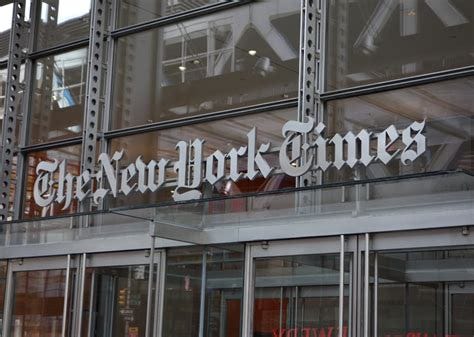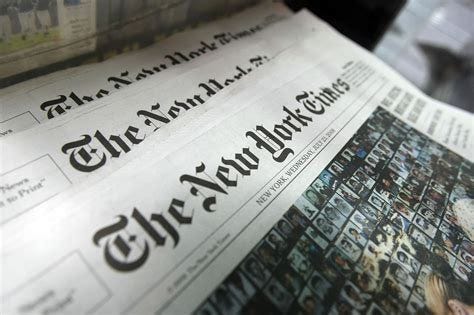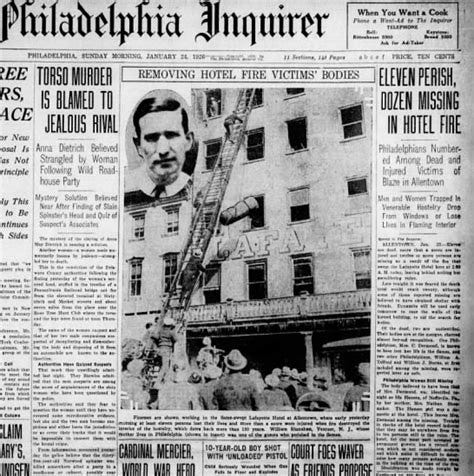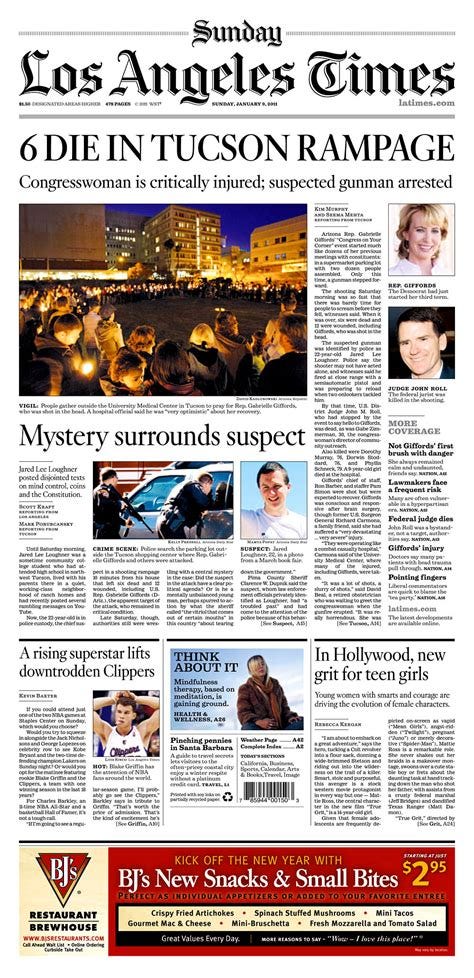US print media is becoming a vanishing breed - The flagship brands such as The New York Times & The Washington Post are last men standing against disruptors of Digital Spacers and social media - Big Time advertisers have shifted to Google and Face Book

Nanna Heitmann was awarded in the singles category for the Europe region for her photograph of an injured Ukrainian soldier, who was forcibly mobilized to fight for Russian-backed separatist forces, receiving treatment in an underground field hospital in occupied Bakhmut, Ukraine.
Philip Montgomery is one of the three winners of the singles category for the North and Central America region for his portrait of Constance Wynn, a resident of Luzerne County, Pa., that captures an anxious moment on the day of the 2024 U.S. presidential election. The image was part of a story for The New York Times Magazine that examined the complexities of the politically significant swing county in Pennsylvania in the two weeks before and after the vote
Philip Montgomery is one of the three winners of the singles category for the North and Central America region for his portrait of Constance Wynn, a resident of Luzerne County, Pa., that captures an anxious moment on the day of the 2024 U.S. presidential election. The image was part of a story for The New York Times Magazine that examined the complexities of the politically significant swing county in Pennsylvania in the two weeks before and after the vote
The US media empire built in the newsprint era during the the 19th and 20th centuries is slowly collapsing and giving way to the new disruptors of digital & social media while flagships are adapting
The Great Fade: Why American Print Media Is Shrinking
By Ashok Nilakantan Ayer. August 19, 2025
For generations, American democracy and civic life were scaffolded by the printed newspaper. The morning paper on the doorstep was more than news—it was a ritual, a source of identity, a connection to a larger national narrative. From The New York Times proclaiming “All the News That’s Fit to Print,” to The Washington Post breaking Watergate, to local dailies tracking school boards and zoning meetings, the press was the lifeblood of accountability.
But in 2025, that ecosystem is in a state of prolonged crisis. Newsrooms have shrunk, county weeklies have shuttered, metropolitan dailies are hollowed shells of their former selves, and even flagship brands battle existential pressures. Some blame social media, some blame Wall Street, others point to audience habits—but the outcome is the same: fewer professional reporters covering fewer stories that matter, leaving vast swathes of the country in what experts call news deserts.
The Flagships: Still Standing, but Reshaped
Despite the decline in print circulation, the U.S. still has towering national brands that dominate the digital sphere.
The New York Times: Once synonymous with its thick Sunday print edition, the Times has successfully pivoted into a digital subscription powerhouse, boasting more than 10 million paying subscribers. It diversified into podcasts (The Daily), games, cooking apps, and even audio news. The print edition remains, but digital is the growth engine.
The Washington Post: Famously purchased by Jeff Bezos in 2013, the Post expanded digital coverage and leaned into technology, but more recently has faced steep losses, newsroom buyouts, and declining subscribers. The Bezos-era ambition to rival the Times has proven difficult. The Post could become The Ghost if its not resurrected with diversification, breaking news, foraying into digital space and social media outlets.
USA Today: The national daily that once reinvented print with splashy color graphics now functions mostly as an online news brand, supported by its Gannett network of local papers. But Gannett itself has cut thousands of jobs and shuttered local titles.
The New York Post: Owned by Rupert Murdoch’s News Corp, the Post thrives more as a digital tabloid, generating viral headlines and social media buzz, but its print footprint is far smaller than in its heyday. Murdochs Wall Street Journal has forayed into political controversies like the Epstein files from its core competency of reporting developments on Wall Street and global economic news.
The Philadelphia Inquirer, Boston Globe, Chicago Tribune, Los Angeles Times: These great regional institutions have had different fates. The Globe has stabilized under local billionaire John Henry’s ownership, while the Inquirer is run as a nonprofit trust. The Tribune was absorbed by Alden Global Capital, a hedge fund notorious for slashing newsroom costs. The L.A. Times, despite ownership by biotech billionaire Patrick Soon-Shiong, has faced recurring waves of layoffs and questions about sustainability.
The Lesson : The Scale and Investment matter. National titles with diversified revenue streams or wealthy patrons can survive—even thrive—but regional papers without such cushions face relentless contraction.
The Vanishing Local Press
If flagship papers are wobbling, small-town and county papers are collapsing outright.
In 2004, America had around 9,000 local newspapers; today that number has dropped below 6,000. Hundreds of counties have no local paper at all. This erosion is devastating because these papers once provided watchdog coverage of local officials, courts, police, schools, and zoning boards—the unglamorous but vital oversight work that larger national outlets cannot replicate.
The loss creates “news deserts,” where misinformation and rumors often fill the gap. Studies show that when a community loses its local paper, voter turnout drops, municipal borrowing costs rise (because there’s less scrutiny of local finances), and corruption risks grow.
Small publishers cite the same culprits:
Advertising dollars—once their lifeblood—migrated to Google and Facebook.
Younger readers consume news via TikTok, Instagram, YouTube, or aggregator apps.
Costs of printing and distribution rise every year.
Many small papers are acquired by hedge funds that strip assets, cut reporting staff, and leave only skeleton operations.
Why the Collapse? A Perfect Storm
The decline of print media in the U.S. isn’t due to one factor but a convergence of forces:
1. Digital Disruption
Social media and digital platforms siphoned away both readers and advertisers. Where once Macy’s or the local car dealership bought a full-page ad in the Tribune, now they buy targeted ads on Facebook and Google. Classifieds—long a cash cow—were obliterated by Craigslist and later online services.
2. Audience Habits
Readers no longer wait for a morning paper; they want instant, free updates on their phones. Younger generations rarely form the habit of paying for print. Even when they subscribe, it’s usually digital.
3. Ownership Models
The arrival of hedge funds like Alden Global Capital or Fortress Investment as newspaper owners accelerated cuts. Their model: buy distressed papers, strip costs, sell assets, squeeze for short-term profit. While a few billionaires (Bezos, Henry, Soon-Shiong) invested, most papers fell under cost-cutters.
4. Erosion of Trust
Public trust in media has declined sharply. Partisan polarization means many Americans view mainstream outlets as biased. Some turned to partisan cable news or influencers on X and YouTube, further weakening the financial base of traditional print.
5. High Costs, Low Margins
Running a newsroom with investigative reporters, foreign bureaus, fact-checking, and editors is expensive. Digital ads pay pennies compared to print dollars, and subscription revenue alone often can’t cover costs.
Consequences for Democracy
The crisis is not just economic—it’s civic. Without watchdog journalism, power goes unchecked. When local councils or statehouses know nobody is watching, corruption and incompetence proliferate. Research has shown municipalities without robust local coverage end up paying higher borrowing costs because lenders perceive higher risks.
Nationally, the information void is often filled by hyper-partisan outlets, misinformation on social media, or AI-generated content. The “Fourth Estate” that once served as a counterweight to government and corporate power is diminished.
Attempts at Reinvention
Not all is doom. Several experiments offer paths forward:
Digital-first subscription models (NYT, Wall Street Journal).
Nonprofit conversions (Philadelphia Inquirer, Salt Lake Tribune).
Billionaire philanthropy (Bezos at the Post, Soon-Shiong at the L.A. Times).
Local newsletters and startups: Outlets like Axios Local or Substack newsletters attempt to replace the function of local beat reporting.
Collaborative models: Newsrooms pool resources for investigative projects (e.g., ProPublica partnerships).
But these models are uneven, and many communities remain unserved.
Is Print Dead—or Just Transformed?
The question is less whether print survives than whether journalism does. The print edition is increasingly symbolic—a prestige product for legacy readers—but the real business is digital subscriptions, podcasts, streaming, and events.
The New York Times and Wall Street Journal show that scale and brand prestige can sustain profitable digital-first models. But the middle tier—the great metro dailies—and the bottom tier—county weeklies—face the hardest squeeze.
Print, in its mass-market form, may not survive the next 20 years. Journalism might, but it will look different: fragmented, digital, platform-driven, reliant on philanthropic support, and deeply unequal across geography.
The Bottom Line
The decline of U.S. print media is not a story of sudden death but of erosion. The flagships stagger on, some stronger than others, while local journalism—the connective tissue of American democracy—is collapsing fastest. The causes are structural: digital platforms absorbing ad money, shifting audience habits, ownership by cost-cutting funds, and rising distrust.
Whether the U.S. can reinvent a sustainable model for local news is an open question. If it cannot, the costs will not just be counted in layoffs and shuttered printing presses, but in less accountability, weaker civic life, and a public sphere dominated by whoever can shout the loudest online.
Perhaps the greatest success story of adaptation, the Times has pivoted to become a digital subscription giant. With more than 10 million subscribers, it diversified into podcasts (The Daily), games, cooking, and audio platforms. Its print edition, once the heartbeat of Manhattan mornings, now serves prestige rather than profit. The Times shows that with scale, brand power, and product diversification, journalism can still be profitable—though few others can replicate its model.
The Washington Post
The Post became a global powerhouse under Jeff Bezos’s 2013 acquisition, expanding coverage and tech capacity. Yet more recently it has struggled with subscriber losses and buyouts. Bezos’s dream of rivaling the Times hasn’t fully materialized, showing how even a billionaire’s backing can’t immunize a paper from audience fragmentation and declining trust.
USA Today
When launched in 1982, USA Today revolutionized print with color graphics, bite-sized stories, and national reach. Today, it functions more as a digital news hub within the Gannett chain. But Gannett has been ravaged by debt and layoffs, shrinking local coverage and leaving many of its communities underserved. USA Today endures in name, but its empire of local dailies is fading fast.
New York Post
Once the city’s scrappy tabloid, the Post thrives in the digital age by leaning into viral headlines and social-media-ready stories. Owned by Auz media moghul Rupert Murdoch’s News Corp, it wields disproportionate influence in politics and culture, despite modest circulation. The print edition is less relevant; the Post today is more of a digital meme machine than a paper.
Murdoch was once a friend of Trump, but flipped when he thought the game was up when the former president faced a litany of court cases. His front page cartoons of Trump as Humpty Dumpty turned Trup an enemy. Now the two are fighting a war of attrition over full disclosure of Epstein files with an unrelentting english editor going for the presidents jugular with an “apocryphal” story of Trumps letter to Epstein on his 50th birthday written on a nude women and signed on her private parts. The story was published in the Wall Street Journal, the bible of the financial district and the financial markets globally.
A furious Trump calling it garbage news has sued the paper for an asstronomical $10 billion in a defamation suit — its not the money he is after but to destroy the newspaper and strpping it off its credibility and prevent any further exposure. But the Post is standing firm. The matter proceeds in courts.
The Philadelphia Inquirer
The Inquirer has transformed into a nonprofit trust—an experiment in sustaining journalism by removing profit pressure. It still provides serious coverage, but its newsroom is smaller, its reach diminished. Nonprofit conversion has offered breathing room, but the question remains: can philanthropy fund accountability reporting at scale?
The Boston Globe
Rescued by the famed baseball team of Chicago Red Sox owner John Henry, the Globe stabilized after years of turmoil. It maintains strong regional influence and has made strides in digital subscriptions. But like all metro dailies, it fights declining advertising and a shrinking print base. Its survival illustrates the importance of local billionaire owners who see newspapers as civic institutions.
The Chicago Tribune
A cautionary tale. Acquired by Alden Global Capital, the hedge fund infamous for stripping papers, the Tribune endured deep layoffs, closed offices, and gutted local coverage. Once a Midwestern powerhouse, it is now a hollowed brand—showing what happens when newspapers become line items in financial portfolios.
The Los Angeles Times
Bought by biotech billionaire Patrick Soon-Shiong in 2018, the L.A. Times had a brief revival. But subsequent waves of layoffs, shrinking ad revenue, and subscriber churn left it unstable. Even billionaire ownership isn’t a silver bullet if strategy falters. Still, it remains the West Coast’s most important journalistic institution.
The disruption and its consequnces
The stakes go beyond nostalgia. Without watchdog journalism, democracy weakens. When local newspapers vanish, politicians face less scrutiny. “News deserts” become fertile ground for misinformation, partisan propaganda, and conspiracy theories.
Nationally, the void is filled by hyper-partisan outlets, talk radio, and algorithm-driven social media. The Fourth Estate—once a counterweight to power—is losing its force.
Reinvention Attempts
Despite the grim picture, innovation is happening:
Digital subscriptions: The Times and Wall Street Journal show people will pay for quality at scale.
Nonprofit conversions: Philadelphia Inquirer and Salt Lake Tribune are testing models that frame journalism as a public good.
Local newsletters: Substack, Axios Local, and independent journalists fill niches once covered by local dailies. (This article is brought to you by Substack and published on its platform which is becoming a brand in itself and ever growing among young readers, writers, authors and the creative and the intellectuals).
Collaborative reporting: ProPublica and local partners share resources for big investigations.
But these efforts remain patchwork. The U.S. lacks a systemic solution to sustain local journalism.
Print’s Future: Symbol or Substance?
Print editions are increasingly ceremonial—a prestige object for older readers. Print is more of a legacy trying to retain its flagship brands among the older generations. The real business is digital: subscriptions, podcasts, events, streaming. National flagships with brand prestige can survive. The middle-tier metros and county weeklies face the toughest road.
Within 20 years, print may survive as a boutique product, but journalism will be overwhelmingly digital, fragmented, and unequal. Wealthy cities will have strong coverage; rural counties may have none.
The Bottom Line
The story of U.S. print media is not a single obituary but a slow erosion. The flagships survive through digital reinvention or billionaire patrons. The middle tier struggles under hedge-fund ownership. The bottom tier—local weeklies—vanishes.
The reasons are structural: digital disruption, ownership shifts, audience habits, and declining trust. The consequences are civic: weaker accountability, more misinformation, and a fraying democratic fabric.
Whether America reinvents journalism—through philanthropy, nonprofit models, or digital subscriptions—remains uncertain. What’s clear is that newspapers, once the backbone of civic life, are no longer guaranteed. The Fourth Estate is shrinking, and the cost is borne not just by journalists but by the public itself.














Sir, not only Brilliant but also timely. When Fourth estate is winning a concept of Fifth estate is emerging with subscription based cost effective digital platform
ReplyDelete